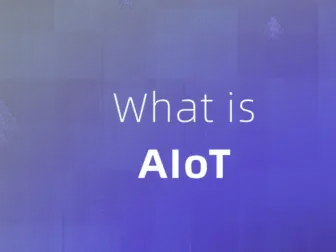Tag - energy management
AI and Machine Learning, Blog , February 19, 2025 , AI in Healthcare, AI Robots, AIoT, Artificial Intelligence, Edge Computing, energy management, Industrial AI, iot, Logistics Automation, Smart Agriculture
AI and Machine Learning, Blog, Industrial Solutions , February 12, 2025 , AI + IoT, AIoT, Cloud-Edge, Deep Learning, DeepSeek, Edge Computing, energy management, Industrial AIoT, Predictive Maintenance, Smart Grid, Smart Healthcare
Blog , March 25, 2024 , automation, device integration, energy management, firmware benefits, iot, IoT customization, smart Home, Tasmota firmware
Maximizing Efficiency: Innovative Strategies for Effective Energy Management
Maximizing Efficiency: Innovative Strategies for Effective Energy Management
In a world increasingly focused on sustainability and conservation, the importance of effective energy management cannot be overstated. Energy management refers to the process of monitoring, controlling, and conserving energy in a building or organization. By implementing innovative strategies for energy management, businesses and households can significantly reduce their energy consumption, lower costs, and contribute positively to the environment.
One of the key strategies for effective energy management is conducting energy audits. An energy audit is a thorough assessment of a facility’s energy use, identifying areas where efficiency can be improved. The audit pinpoints energy leaks, inefficient equipment, and behavioral practices that lead to wastage. Solutions may include upgrading to energy-efficient lighting, insulating buildings to reduce heating and cooling needs, and installing programmable thermostats for better temperature control.
Another cornerstone of energy management is the adoption of renewable energy sources. Solar panels, wind turbines, and geothermal systems can be integrated into the energy mix to reduce dependence on fossil fuels. Transitioning to renewable energy not only decreases carbon footprints but also ensures long-term sustainability and resilience against fluctuating energy prices.
Energy management systems (EMS) are powerful tools that utilize modern technology to provide real-time data analysis and control over energy usage. These systems can automatically adjust lighting, heating, and cooling based on occupancy and time of day, leading to significant energy savings. Additionally, smart meters and IoT devices allow for the remote monitoring and management of energy consumption, giving users the ability to track their habits and make informed decisions about their energy use.
Furthermore, implementing demand-side management (DSM) programs can effectively lower energy consumption during peak hours. DSM involves incentivizing users to reduce their energy use at specific times, such as during a grid’s maximum load periods. This can be achieved through time-of-use pricing, where energy costs more during peak times, or through direct load control programs where utilities can remotely reduce power consumption of connected appliances during peak demand.
Education and training also play an essential role in energy management. Employees and household members need to be aware of the importance of energy conservation and the actions they can take to help. Simple acts like turning off lights when not in use, using energy-efficient appliances, and reducing water heating temperatures can collectively make a significant impact.
Energy-efficient building design is also becoming increasingly popular. The concept of green buildings focuses on creating structures that are optimized for energy use, with features such as passive solar heating, natural lighting, and improved ventilation systems. These design principles not only reduce the need for artificial heating and lighting but also improve the overall comfort and air quality within the building.
In conclusion, effective energy management is a multifaceted approach that requires a combination of technological solutions, behavioral changes, and policy-driven incentives. By investing in energy audits, embracing renewable energy, leveraging technology with EMS, participating in DSM programs, focusing on education, and designing energy-efficient buildings, we can achieve a sustainable future with reduced energy consumption, lower costs, and a minimal environmental footprint. The implementation of these strategies is not only an economic imperative but also a moral one, as we strive to preserve our planet for future generations.


